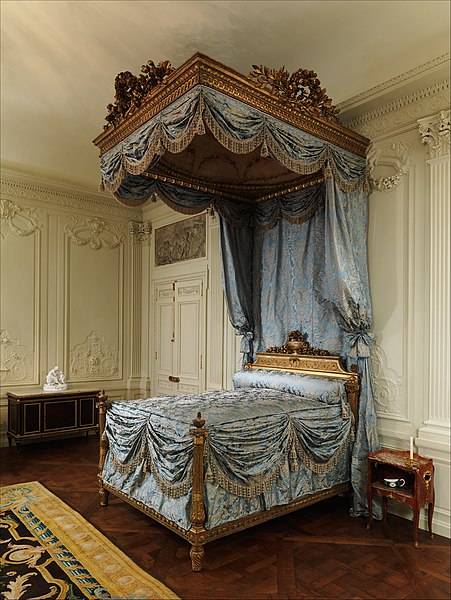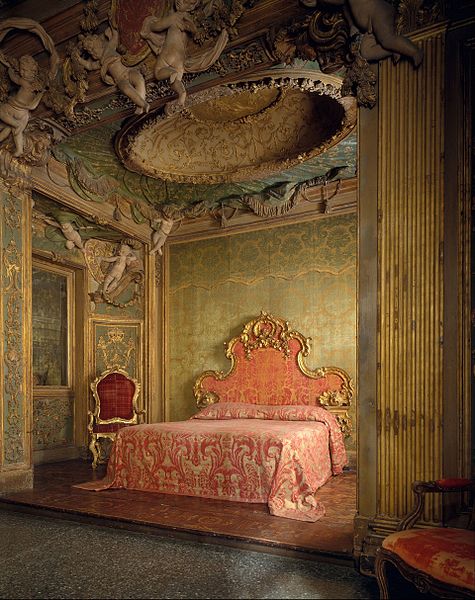
In the Fiction Stacks of the Puey Ungphakorn Library, Rangsit campus, is a novel for young readers with some themes of interest to Thammasat University students of history, sociology, education, and related subjects. It is a translation into Thai language of the American novel From the Mixed-Up Files of Mrs. Basil E. Frankweiler. TU students who may wish to read the book in its original language may borrow it by using the TU Library Interlibrary Loan (ILL) Service.
It is the story of two children from the state of Connecticut, USA, who decide to run away from home. They see that a number of beds are on display in historical rooms in the Metropolitan Museum of Art in New York City, and decide to sleep there. The Metropolitan Museum of Art has a noted collection of old furniture.
At the museum they discover an artwork that belonged to a collector named Mrs. Basil E. Frankweiler. They research the sculpture and present their findings to the former owner. She allows them to do further study in her personal archives which are very disorganized. They decide the artwork is more valuable than is generally understood.

The author of From the Mixed-Up Files of Mrs. Basil E. Frankweiler is Elaine Lobl Konigsburg. Ms. Konigsburg earned a bachelor of science degree in chemistry from the Carnegie Institute of Technology in Pittsburgh, Pennsylvania. Her first plan was to study to become a librarian, teacher, or chemist. She pursued graduate studies in chemistry at the University of Pittsburgh, but eventually decided to be a writer.
Her book preceded by many years the successful series of films, A Night at the Museum in which a night watchman at New York City’s American Museum of Natural History discovers that the exhibits come to life at night. The TU Library owns DVDs of two of the films in that series, and they may be viewed in the Rewat Buddhinan Media Center on the U2 level of the Pridi Banomyong Library, Tha Prachan campus.
Unlike the Night at the Museum series, From the Mixed-Up Files of Mrs. Basil E. Frankweiler is not based on fantasy or science fiction. It does deal with the childish fantasy of what happens in museums after they close for the night and all the visitors go away. After they have solved the problem of where to store their belongings overnight, the children decide to make their stay at the Museum a learning experience:
Claudia hid her violin case in a sarcophagus that had no lid. It was well above eye level, and Jamie helped hoist her up so that she could reach it. It was a beautifully carved Roman marble sarcophagus. She hid her book bag behind a tapestry screen in the rooms of French furniture. Jamie wanted to hide his things in a mummy case, but Claudia said that that would be unnecessarily complicated. The Egyptian wing of the Metropolitan was too far away from their bedroom; for the number of risks involved, it might as well be in Egypt. So the trumpet case was hidden inside a huge urn and Jamie’s book bag was neatly tucked behind a drape that was behind a statue from the Middle Ages. Unfortunately, the museum people had fastened all the drawers of their furniture so that they couldn’t be opened… Upon their return to the museum, Claudia informed Jamie that they should take advantage of the wonderful opportunity they had to learn and to study. No other children in all the world since the world began had had such an opportunity. So she set forth for herself and for her brother the task of learning everything about the museum. One thing at a time. (Claudia probably didn’t realize that the museum has over 365,000 works of art. Even if she had, she could not have been convinced that learning everything about everything was not possible; her ambitions were as enormous and as multi-directional as the museum itself.)
In an interview, Ms. Konigsburg stated that when she was growing up, her favorite authors were Frances Hodgson Burnett and Louisa May Alcott, and many years later, she still admires these writers and believes in their stories. The TU Library owns several books by and about Frances Hodgson Burnett and Louisa May Alcott.

Thailand and International Overnight Museum Stays
In recent years, the example of Ms. Konigsburg and the Night at the Museum film series has led some museums in the United States of America and the United Kingdom to innovate with special programs inviting children and adults to stay overnight at museums. One example is The American Museum of Natural History in New York, with overnight programs for children and adult visitors.
Other international museums to propose similar programs include the Dino Snores events at the Natural History Museum, London and The Hepworth Sleepover at The Hepworth Wakefield, West Yorkshire, U.K., a contemporary art museum. In the USA, some museum sleepover events are Penguins & Pajamas at the California Academy of Sciences, San Francisco and Science Sleepovers at The Carnegie Science Center in Pittsburgh, Pennsylvania.
In Washington D.C., sleepovers are offered at The American History Museum, Natural History Museum, the Air and Space Museum’s Udvar-Hazy Center, and the National Portrait Gallery.
The Dozin with the Dinos program at the Field Museum of Natural History, Chicago, Illinois is another opportunity to experience a public museum at night, as is Operation Slumber at the Intrepid Sea, Air and Space Complex, New York, a floating museum on an old aircraft carrier docked in the Hudson River on Manhattan’s coast. There are also ROMKids Sleepovers at the Royal Ontario Museum (ROM), Toronto, Canada.
In Thailand, while it is not yet possible to pay a fee in order for children and adults to stay overnight at museums, the popular Night at the Museum at Museum Siam on Sanam Chai Road in Bangkok, Thailand, is an after-hours event featuring interactive exhibits about the development of Thailand, open until 10pm on certain nights.
For Thais wishing to better understand the subject of sleep, Quatex Natural Latex Co., Ltd. on Chaloemphrakiat Rama 9 Road, Ratsada, Phuket offers a Sleep Museum to explore the myths about sleep. Its website notes:
As sleeping is an important and inevitable component of human life, innovators seek ways to invent new bedding technology from time to time. Sleep Museum outlines all these stories and portray the history of sleeping and bedding from different eras. Then, take you to the modern days of bedding innovations in which LATEX leads as the top quality material for beds, mattresses and pillows. Knowledge on the whole latex production processes from extracting the latex from natural rubber tree until producing the final product are shown through our Sleep Museum.

(All images courtesy of Wikimedia Commons)
